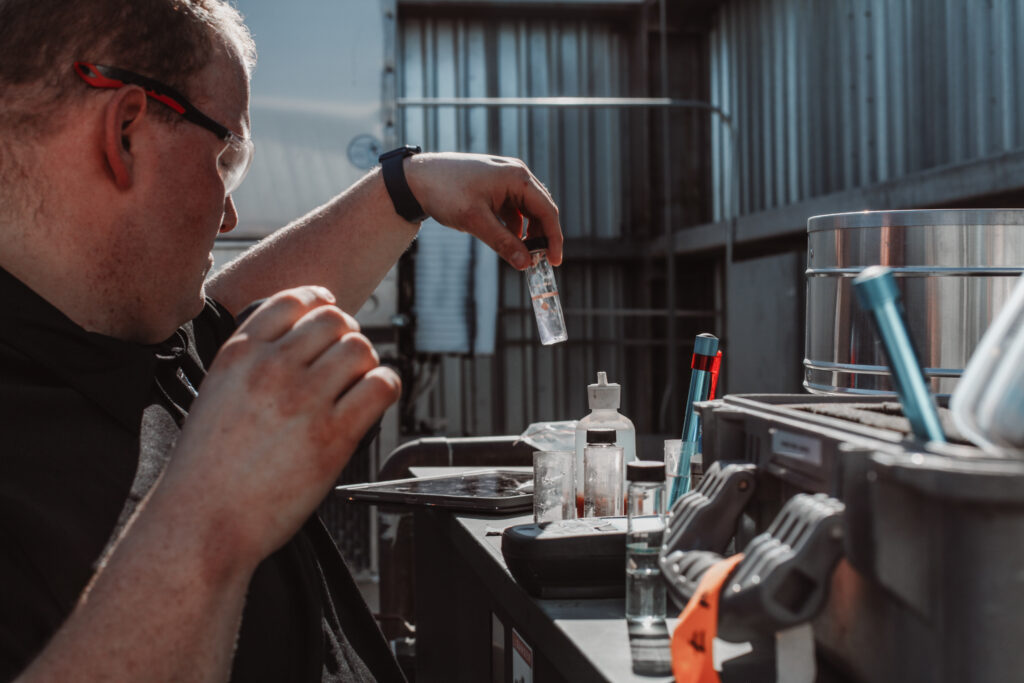Legionella servicing has become increasingly important in ensuring the safety of water systems, especially in environments susceptible to Legionella bacteria growth. Understanding the acceptable levels of Legionella in water is crucial for maintaining public health and preventing outbreaks of Legionnaires’ disease. In this article, we’ll delve into the requirements for Legionella testing and explore how often it should be conducted to ensure water safety.
Is Legionella Testing Required?
Legionella testing requirements are paramount for ensuring the safety of water systems in various facilities. Regulatory bodies and health authorities have established guidelines to mitigate the risk of Legionella contamination and prevent outbreaks of Legionnaires’ disease. Understanding these requirements is crucial for facility managers and water management professionals to maintain compliance and safeguard public health.
In many jurisdictions, Legionella testing requirements are mandated for certain types of facilities, particularly those considered high-risk environments. Facilities such as hospitals, nursing homes, hotels, and industrial buildings where water systems can harbor Legionella bacteria are often subject to mandatory testing regulations. These requirements aim to identify and address potential sources of Legionella contamination before they pose a risk to occupants or the public.
Compliance with Legionella testing requirements involves conducting regular assessments of water systems to detect the presence of Legionella bacteria. Facility managers are responsible for implementing testing protocols in accordance with regulatory guidelines and industry best practices. Failure to adhere to these requirements can result in penalties, fines, and potential legal liabilities in the event of Legionella outbreaks.
Additionally, proactive Legionella testing can help identify areas of concern within water systems and inform effective risk management strategies. By monitoring Legionella levels regularly, facility managers can detect trends or spikes in bacterial concentrations and take corrective actions to mitigate risks promptly.
If you are unsure of Legionella testing requirements in your facility, reach out to your water safety provider, or visit the CDC for additional information.
How Often Should Legionella Testing Be Done?
Determining the frequency of Legionella testing is essential for maintaining water safety and preventing the spread of Legionella bacteria. The CDC and other regulatory bodies provide guidelines to help facilities establish appropriate testing schedules based on risk factors and regulatory requirements.
The frequency of Legionella testing depends on several factors, including the type of facility, its history of Legionella contamination, and the effectiveness of control measures in place. CDC Legionella testing guidelines emphasize the importance of regular testing in high-risk environments, such as healthcare facilities, nursing homes, hotels, and industrial buildings. Legionella testing requirements may also vary depending on jurisdictional regulations and industry standards.
Facility managers should develop comprehensive Legionella testing protocols that align with CDC guidelines and regulatory requirements. These protocols should outline the frequency of testing, sampling locations, testing methods, and corrective actions in the event of elevated Legionella levels.
Regular monitoring of water systems through Legionella testing is essential for early detection of bacterial growth and timely intervention to prevent outbreaks of Legionnaires’ disease. By adhering to established testing schedules and protocols, facilities can minimize the risk of Legionella contamination and protect the health and safety of occupants.
How to Test for Legionella in Water
CDC Legionella testing guidelines outline two primary methods for testing water samples: culture-based methods and molecular techniques. Both methods have their advantages and are used based on the specific requirements of the testing scenario.
- Culture-Based Methods: Culture-based methods involve collecting water samples from different points within the water system and culturing them in a laboratory setting to encourage the growth of Legionella bacteria. This process typically takes several days to allow the bacteria to proliferate and form visible colonies. Once colonies are visible, they are identified and enumerated using specialized techniques.
Culture-based methods are considered the gold standard for Legionella testing and provide valuable information about the presence and concentration of Legionella bacteria in water samples. However, they require specialized laboratory equipment and trained personnel to perform the tests accurately.
- Molecular Techniques: Molecular techniques, such as polymerase chain reaction (PCR), offer a more rapid and sensitive approach to Legionella testing. PCR allows for the detection of Legionella DNA in water samples without the need for bacterial culturing. This method can provide results within hours, compared to the days required for culture-based methods.
PCR-based testing is particularly useful for rapid screening of water samples and early detection of Legionella contamination. However, it may not provide information about the viability of the bacteria or their ability to cause disease, as culture-based methods do.
CDC Legionella testing guidelines recommend using culture-based methods or molecular techniques for testing water samples, depending on the specific requirements of the testing scenario. Facility managers and water management professionals should select the appropriate testing method based on factors such as testing objectives, turnaround time, and availability.
What is an Acceptable Level of Legionella?
Acceptable levels of Legionella in water are determined by regulatory bodies and health authorities, who establish guidelines to protect public health and minimize the risk of Legionella outbreaks. These guidelines specify maximum allowable concentrations of Legionella bacteria in water samples, beyond which corrective actions must be taken to mitigate the risk of exposure.
Regulatory agencies and industry standards define specific limits for Legionella bacteria in water, typically measured in colony-forming units per milliliter (CFU/mL). Legionella CFU limits vary depending on the type of facility, its risk factors, and regulatory requirements. Facilities such as hospitals, nursing homes, hotels, and industrial buildings are subject to different standards based on their susceptibility to Legionella contamination and the vulnerability of their occupants.
Facility managers and water management professionals must adhere to these guidelines and regularly monitor Legionella levels in water systems to ensure compliance and prevent potential health hazards. Failure to maintain Legionella levels within acceptable limits can lead to legal liabilities in the event of Legionella outbreaks.
IWC Innovations Leads the Way in Legionella Management
As leaders in Legionella servicing, IWC Innovations understands the critical importance of maintaining acceptable levels of Legionella in water to uphold public health standards and prevent Legionnaires’ disease outbreaks.
IWC stands as a beacon of knowledge in Legionella testing requirements, offering unparalleled insights and guidance tailored to various facilities’ needs. Our in-depth understanding of regulatory mandates ensures that our clients remain compliant, especially in high-risk environments like hospitals, nursing homes, hotels, and industrial facilities.
With IWC by your side, determining the optimal frequency of Legionella testing becomes a streamlined process, guided by the recommendations of esteemed organizations like the CDC. Our proficiency extends to the realm of testing methodologies and protocols, encompassing both culture-based methods and cutting-edge molecular techniques. By leveraging our expertise, clients can confidently select the most suitable testing approach to meet their objectives and resource constraints.




